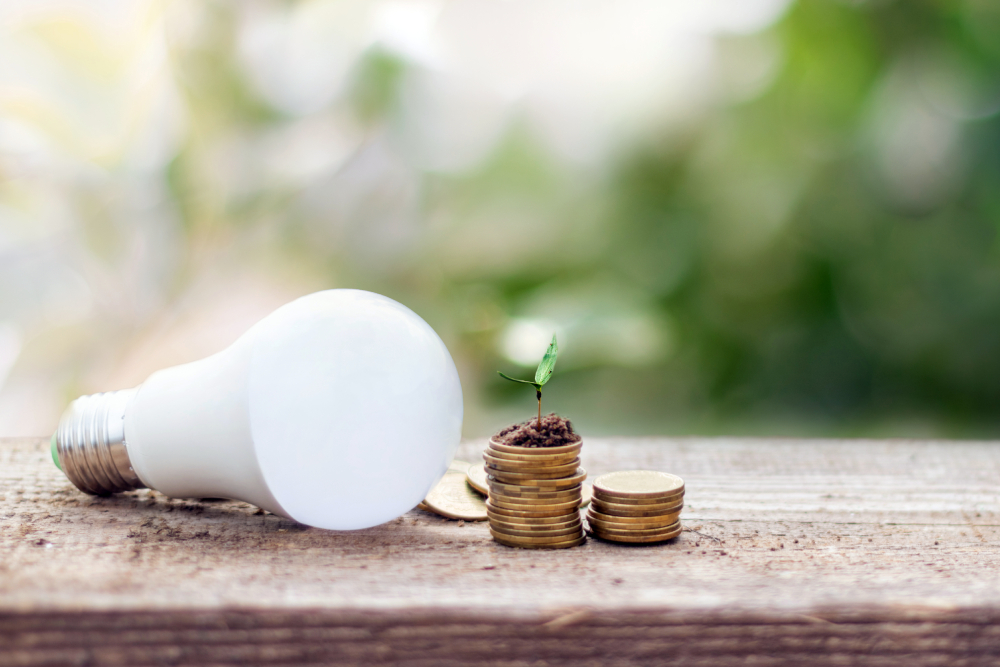
Energy efficiency is critical to sustainable living. Our homes consume a lot of energy, which contributes to climate change and increases our carbon footprint. However, by implementing energy-saving practices, we can reduce our energy consumption and reduce our impact on the environment. Here are ten energy-saving tips for your home.
-
Upgrade Your Light Bulbs
Lighting accounts for about 10% of your home’s energy consumption. Therefore, using energy-efficient light bulbs can save you a considerable amount of energy and money. LED (Light Emitting Diodes) bulbs are the most energy-efficient bulbs on the market. They use 75% less energy than incandescent bulbs and can last up to 25 times longer. Although LED bulbs may be more expensive upfront, they have a more extended lifespan, and you will save money in the long run.
-
Use a Programmable Thermostat
Heating and cooling are the most significant contributors to your home’s energy consumption, accounting for almost half of the energy used in a typical home. A programmable thermostat can help regulate your home’s temperature and reduce your energy consumption. You can program your thermostat to lower the temperature when you’re away or asleep and increase it when you’re back. This can save you up to 10% on your heating and cooling bills.
-
Seal Air Leaks
Air leaks in your home can cause drafts, allowing warm air to escape in the winter and cold air to enter in the summer. This can increase your heating and cooling bills significantly. You can seal air leaks by using caulk to seal gaps around windows and doors and weather-stripping to seal gaps around doors. You can also seal leaks in your ductwork using mastic sealant or duct tape.
-
Use Energy-Efficient Appliances
Appliances such as refrigerators, washing machines, and dishwashers account for about 13% of your home’s energy consumption. Therefore, using energy-efficient appliances can save you a considerable amount of energy and money. Look for appliances with the ENERGY STAR label. This label ensures that the appliance meets energy efficiency standards set by the U.S. Department of Energy.
-
Installing Low-Flow Showerheads
Showers account for about 17% of indoor water use in a typical home. Using a low-flow showerhead can help reduce your water consumption and your energy consumption. Low-flow showerheads can reduce your water usage by up to 50% without affecting your shower’s performance. By reducing the amount of hot water you use, you’ll save money on your water heating bills.
-
Use natural light
Natural light is an excellent way to reduce your energy consumption. Using natural light instead of artificial light can save money on your energy bills and reduce your carbon footprint. You can maximize natural light in your home by using light-colored walls, installing skylights, and using light-colored window treatments.
-
Unplug Unused Electronics
Electronics such as televisions, computers, and gaming consoles consume energy even when they’re not in use. This is known as standby power or vampire power. You can save energy by unplugging these electronics when you’re not using them or using a power strip to turn off multiple electronics at once.
-
Use Fans Instead of Air Conditioners
Air conditioners consume a significant amount of energy, especially during the hot summer months. Using fans instead of air conditioners can help reduce your energy consumption. Fans consume less energy than air conditioners, and you can use them to circulate the air in your home. You can also use ceiling fans to help cool your home.
-
Use Cold Water
Using cold water for washing clothes, dishes, and other items can significantly reduce your energy consumption. About 90% of the energy washing machines use goes towards heating the water. By using cold water, you can reduce your energy consumption and save money on your water heating bills. Additionally, using cold water can help extend the lifespan of your clothes and prevent shrinkage.
-
Plant Trees and Shrubs
Planting trees and shrubs around your home can help reduce your energy consumption. Trees and shrubs provide shade during the hot summer months, reducing the need for air conditioning. Additionally, they can act as a windbreak during the winter, reducing the amount of cold air that enters your home. Planting trees and shrubs is also beneficial for the environment, as they absorb carbon dioxide and produce oxygen.
In conclusion, reducing home energy consumption is a critical aspect of sustainable living. By implementing these ten energy-conserving tips, you can reduce your energy consumption, save money on your energy bills, and minimize your impact on the environment. While some of these tips may require an initial investment, they can help you save money in the long run and contribute to a greener planet. It’s essential to remember that small changes can make a significant impact, and by implementing these tips, you can take the first step towards a more sustainable lifestyle.
If you are looking for a new solar system for your home in southern California, please contact Brenda at CA Solar Expert.
